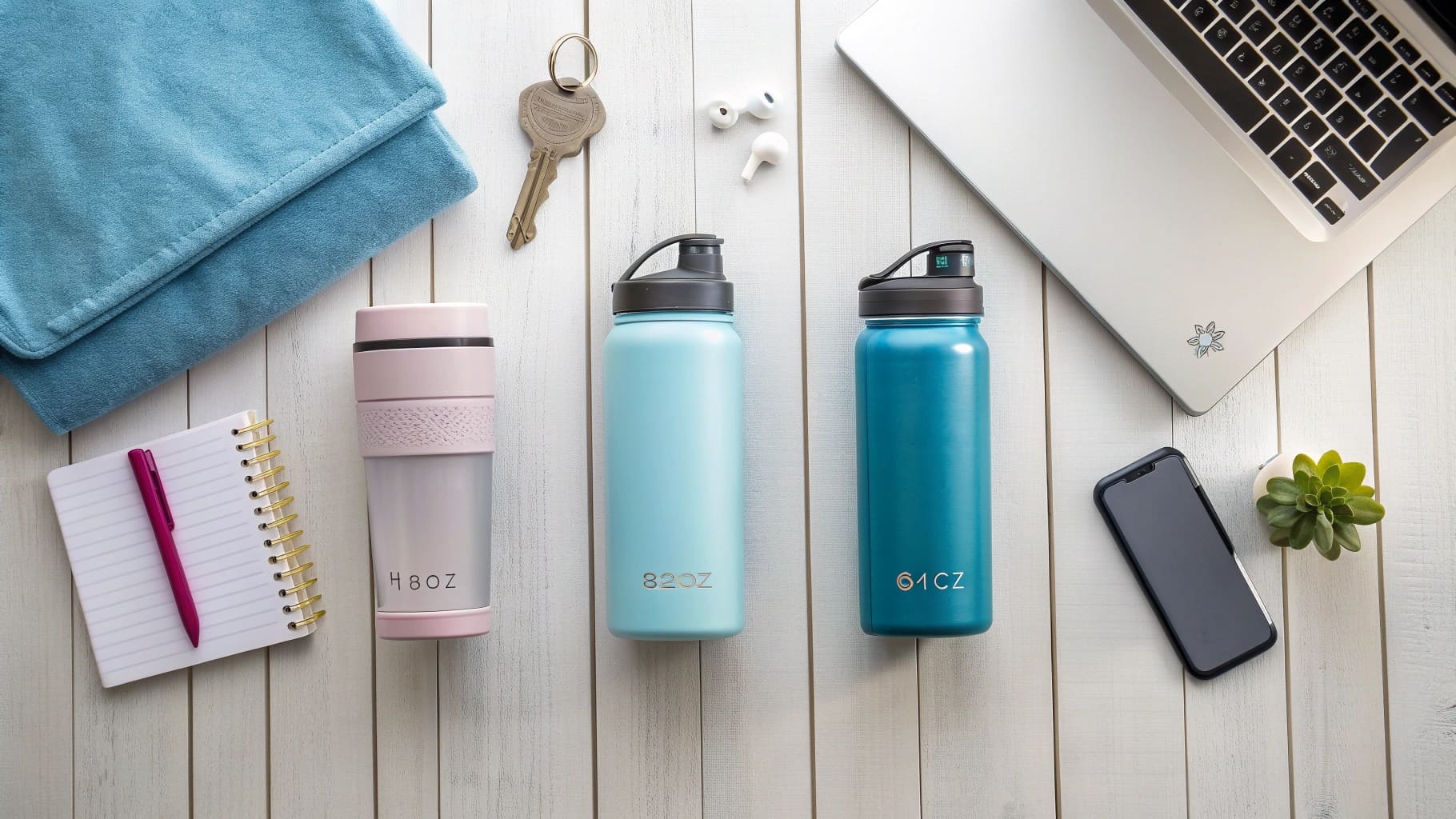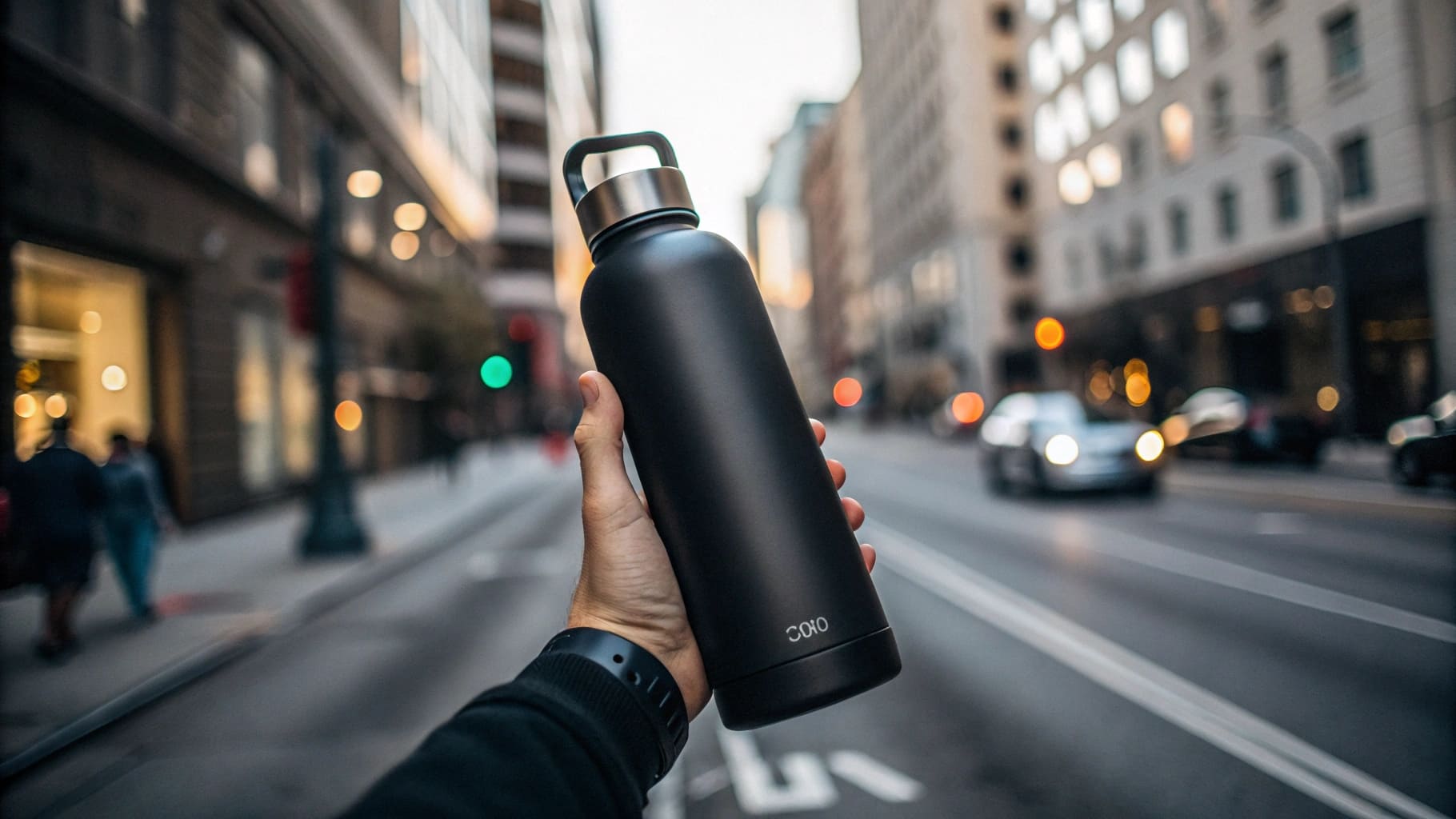Struggling with steel choices for your products? The wrong pick can mean rust, unhappy customers, or overspending. Understanding key differences helps you make smarter buys for your business.
For most drinkware, 304 stainless steel offers the best balance of performance and cost. 201 steel is cheaper but risks rust, especially with acidic drinks or in humid areas. This makes 201 less suitable for quality-focused markets like those in America and Europe.

Choosing the right stainless steel is a big decision for your business. It directly affects your product quality, how happy your customers are, and ultimately, your bottom line. As someone who has been in the stainless steel products business for years, supplying to clients like Mark Shenng in Canada, I've seen how crucial this choice is. Mark always emphasizes quality, but like any smart business owner, he keeps an eye on costs. He knows his customers expect durable, safe products. Let's dive deeper into the common stainless steel types to help you make the best decision for your specific needs, just like I'd advise Mark.
What is the Durability of 304 Stainless Steel for Drinkware?
Worried your drinkware might dent easily or start rusting too soon? Poor durability can lead to customer complaints and costly returns. Thankfully, 304 stainless steel offers reliable strength.
304 stainless steel is very durable for everyday water bottles. It resists rust well and can handle the usual bumps and knocks of daily life. This makes it a popular and long-lasting choice.

When we talk about 304 stainless steel, its reputation for durability in the drinkware industry is well-earned. I often explain to procurement officers that its strength comes from its composition, primarily the chromium and nickel content. These elements create a protective layer that resists corrosion.
Why 304 is a Go-To Standard
For most water bottles, coffee mugs, and tumblers, 304 stainless steel1 is the industry standard. It's what we at Icobottle recommend for general use. It stands up well to daily wear and tear. Think about how many times a water bottle gets dropped or tossed into a bag. 304 can handle that. It's also great at resisting stains and odors, which is important for anything that holds beverages. I remember a client who initially considered a cheaper alternative but switched to 304 after seeing how much better it performed in longevity tests, especially for repeat-use items.
What Makes 304 Tougher Than Some Alternatives?
Compared to something like 201 stainless steel, 304 has significantly better corrosion resistance2. This is mainly due to its higher nickel content (around 8%) and lower manganese. 201 stainless steel, while cheaper, uses more manganese and less nickel. This makes it more prone to rust, especially if the drink is acidic (like fruit juice or some sports drinks) or if the bottle is used in humid environments. For B2B buyers targeting Western markets, like many of my clients in America and Europe, 201 is generally not a good fit for drinkware due to these rust concerns. It might pass initial checks, but long-term durability and safety can become issues.
Here's a quick comparison:
| Feature | 304 Stainless Steel | 201 Stainless Steel |
|---|---|---|
| Corrosion Resistance | Good to Excellent | Fair to Poor, prone to rust with acidity |
| Nickel Content | ~8-10.5% | ~3.5-5.5% |
| Manganese Content | ~2% Max | ~5.5-7.5% |
| Typical Cost | Moderate | Lower |
| Recommended Use | General drinkware, food applications | Structural components, some kitchenware (not ideal for drinkware) |
| Main Markets | Global, including quality-sensitive ones | Price-sensitive markets, non-food contact |
So, for overall durability in everyday drinkware, 304 stainless steel provides a robust and reliable performance.
Is 316 Stainless Steel Much Pricier Than 304?
Are you trying to offer premium quality but also need to watch your budget? Overspending on features your customers don't strictly need can eat into your profits. Understanding the cost versus benefit of 304 versus 316 steel is key.
Yes, 316 stainless steel is noticeably more expensive than 304. This price difference comes from its higher nickel content and the addition of molybdenum. This gives 316 superior corrosion resistance, justifying its premium cost for specific applications.

The price difference between 304 and 316 stainless steel is a common discussion I have with buyers like Mark. He's always looking for that sweet spot between top quality and competitive pricing for his distribution business in Canada. The truth is, 316 stainless steel does come with a higher price tag, and it's important to understand why.
Why the Price Jump for 316?
The main reason 316 costs more is its chemical composition. While both 304 and 316 contain chromium and nickel, 316 includes an important addition: molybdenum, usually around 2-3%. Molybdenum significantly enhances corrosion resistance, especially against chlorides (like saltwater) and various industrial chemicals. Nickel content is also often slightly higher in 316. These added materials, particularly molybdenum, are more expensive, which directly translates to a higher raw material cost for 316 stainless steel. This cost naturally gets passed down the supply chain. I always tell my clients, if you don't need the specific extra protection 316 offers, you might be paying for a feature that doesn't add significant value for your end-user.
When Does 316 Make Financial Sense?
So, when is the extra cost of 316 stainless steel justified for drinkware? Generally, for most everyday water bottles or coffee mugs, 304 stainless steel provides excellent durability and corrosion resistance at a more reasonable price point. However, if you're targeting a niche market that requires superior protection, or if you want to market a product as ultra-premium and highly resilient, then 316 might be the way to go. For example:
- Products intended for use in marine environments where saltwater exposure is common.
- Containers for highly acidic or corrosive liquids (though for most common beverages, 304 is fine).
- Premium-branded items where "medical-grade" or "marine-grade" steel is a selling point.
I usually advise that for general purpose stainless steel water bottles, like the ones Mark often sources, 304 offers a fantastic balance. Buyers typically choose 316 only when there's a clear need for that enhanced resistance or a specific marketing angle that leverages its superior properties.
Here's a simplified look at their cost and primary advantages:
| Feature | 304 Stainless Steel | 316 Stainless Steel |
|---|---|---|
| Key Alloying Additive | Chromium, Nickel | Chromium, Nickel, Molybdenum |
| Relative Cost | Standard | Higher (typically 20-30% more) |
| Corrosion Resistance | Excellent for general purposes | Superior, especially against chlorides & acids |
| Best For | Everyday drinkware, food | Harsh environments, specific chemicals, premium branding |
Ultimately, the decision comes down to the intended application and target market.
When It Comes to Durability, Does 316 Outperform 304 Stainless Steel?
Do you need the absolute maximum resilience for your products, especially in challenging conditions? Product failure in tough environments can really damage your brand's reputation. For specific needs, 316 stainless steel3 offers that enhanced protection.
Yes, 316 stainless steel is generally more durable than 304, particularly when it comes to resisting specific types of corrosion like those from chlorides and harsh acids. This makes it a better choice for demanding environments or specialized applications.

When clients ask me which steel is "more durable" between 304 and 316, it's important to clarify what we mean by durability. If we're talking about everyday bumps and dings, both are quite robust. However, the real difference in durability, especially for B2B buyers considering specialized applications, lies in their resistance to corrosion.
The Edge 316 Has in Tough Conditions
316 stainless steel's superior durability comes primarily from its enhanced corrosion resistance4, thanks to the addition of molybdenum. This element provides a significant advantage in several specific scenarios:
- Chloride Environments: 316 is much better at resisting pitting and crevice corrosion caused by chloride solutions, like saltwater or de-icing salts. This is why it's often called "marine-grade" stainless steel. If I were making products for sailors or coastal areas, 316 would be a strong contender.
- Acidic Substances: While 304 handles common food acids well, 316 offers greater resistance to a wider range of acidic and chemical compounds. This might be relevant for industrial applications or specialized containers, though less so for typical beverage bottles.
- Higher Temperatures: 316 tends to maintain its strength and corrosion resistance better at elevated temperatures compared to 304.
I recall a startup boss who was developing a line of containers for a specialized health supplement that was quite acidic. For his product, the enhanced protection of 316 was a critical feature, even with the higher cost, to ensure product integrity and safety.
Is 316 Always the 'More Durable' Choice for Drinkware?
For general-purpose water bottles, coffee mugs, or tumblers used for common beverages, 304 stainless steel offers excellent durability. It's resistant to the typical wear and tear of daily use and handles most drinks without any issues. The "extra" durability of 316 primarily relates to its performance in more aggressive corrosive environments. So, unless your product is specifically designed for these challenging conditions, 304 provides a great balance of long-lasting performance and cost-effectiveness.
Consider this breakdown:
| Aspect of Durability | 304 Stainless Steel | 316 Stainless Steel |
|---|---|---|
| Impact Resistance | Good | Good (similar to 304) |
| General Corrosion | Excellent for daily use, common foods/drinks | Excellent |
| Chloride Resistance | Moderate | Superior (ideal for marine/coastal) |
| Acid Resistance (Strong) | Fair to Good | Very Good to Excellent |
| Suitability for Most Drinkware | High – Industry Standard | High – Premium/Specialized (often overkill for general use) |
For someone like Mark, whose primary business is distributing standard stainless steel water bottles in Canada, 304 usually hits the mark perfectly. It offers the quality and durability his customers expect without the added expense of 316, which might not be necessary for their typical usage. The choice for 316 becomes clear when a specific, demanding application calls for its superior anti-corrosion properties.
Conclusion
Choosing between 201, 304, and 316 steel depends on your product's use, needed durability, and budget. For most drinkware, 304 offers the best overall value and performance.
-
Explore the advantages of 304 stainless steel for drinkware, including its durability and corrosion resistance, to make informed choices. ↩
-
Understanding corrosion resistance is crucial for selecting materials that ensure longevity and safety in drinkware. ↩
-
Explore the advantages of 316 stainless steel, especially its superior corrosion resistance, which is crucial for demanding applications. ↩
-
Understanding the differences in corrosion resistance can help you choose the right stainless steel for your needs, especially in harsh environments. ↩

